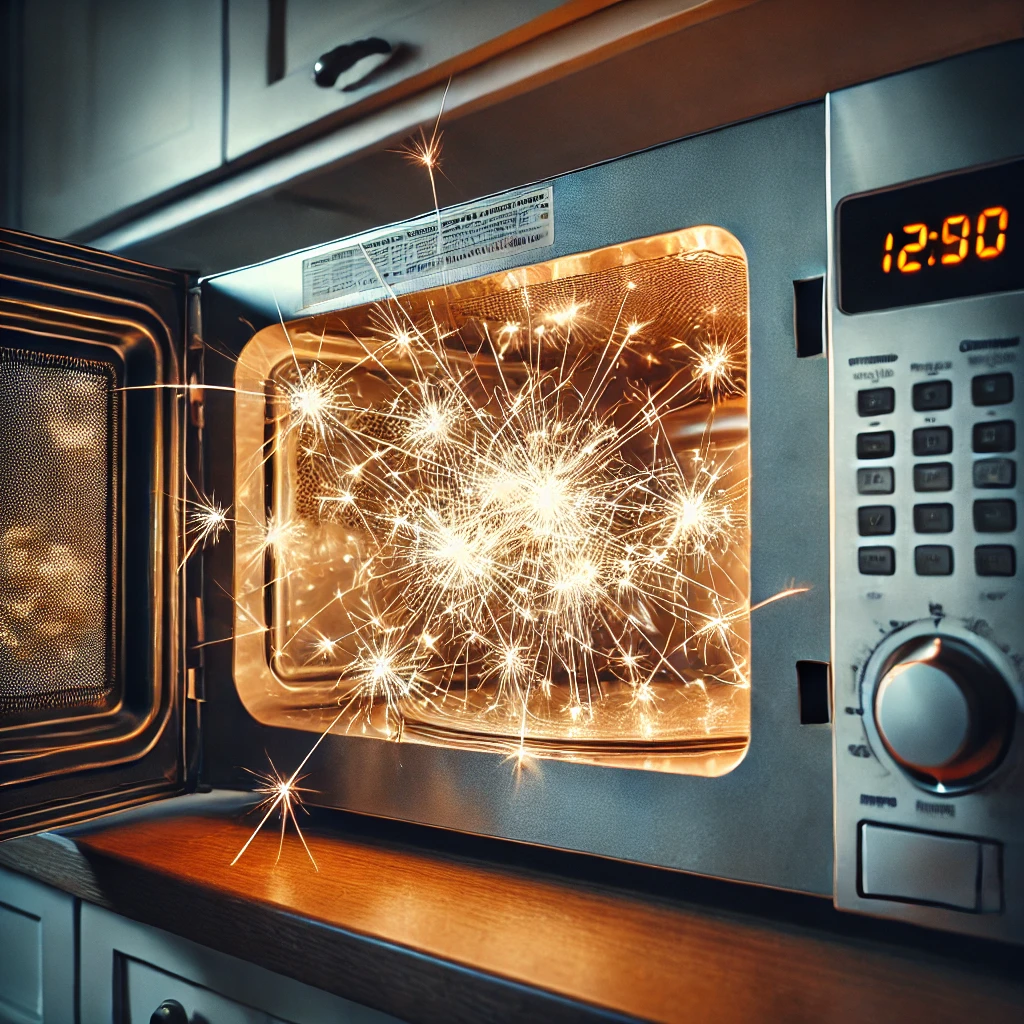
Why Are There Sparks in My Microwave?
Seeing sparks in your microwave can be alarming and dangerous. Sparks can indicate a serious issue that, if left unresolved, could damage your appliance or even cause a fire. Understanding the common causes of sparking in microwaves can help you prevent it from happening and ensure safe usage. Here’s a comprehensive guide on why there are sparks in your microwave and how to address them.
1. Metal Objects
One of the most common reasons for sparks in a microwave is the presence of metal objects. Metal reflects microwave energy, causing it to build up and create sparks.
Common Metal Items:
- Aluminium foil
- Utensils (forks, spoons, knives)
- Metal trim on microwave-safe containers
Solution:
- Remove any metal objects from the microwave before use.
- Use only microwave-safe containers and coverings.
2. Food Wrappers
Some food wrappers, especially those with metallic elements, can cause sparking. Even small amounts of metal can reflect microwaves and create sparks.
Examples:
- Twist ties
- Chip bags with metallic lining
- Some candy wrappers
Solution:
- Remove food from wrappers before microwaving.
- Transfer food to microwave-safe containers.
3. Dirty Microwave
Food splatters and grease buildup inside the microwave can also lead to sparking. These residues can absorb microwaves and cause hotspots that spark.
Solution:
- Regularly clean the inside of your microwave with a damp cloth and mild detergent.
- Ensure that there is no grease or food residue on the walls, ceiling, and floor of the microwave.
4. Faulty Waveguide Cover
The waveguide cover is a small panel inside the microwave that guides microwaves from the magnetron to the cooking chamber. If this cover becomes damaged or dirty, it can cause sparking.
Solution:
- Inspect the waveguide cover for any signs of damage or dirt.
- Clean it gently with a soft cloth, or replace it if damaged.
5. Damaged Microwave Components
Sparks can also be caused by damaged components within the microwave, such as the rack support or interior paint. These issues can expose metal parts that reflect microwaves and create sparks.
Solution:
- Inspect the interior of the microwave for any signs of wear or damage.
- Repair or replace any damaged components, such as the turntable support or interior coating.
6. Overheating or Arcing
Arcing can occur when the microwave is running empty or with low moisture foods. This can cause the microwave’s energy to reflect back and create sparks.
Solution:
- Avoid running the microwave empty.
- Use a microwave-safe cup of water if heating low moisture foods to absorb excess microwave energy.
7. Faulty Magnetron
The magnetron is the component that generates microwaves. If it becomes faulty, it can cause sparking and arcing inside the microwave.
Solution:
- If you suspect the magnetron is faulty, it is best to contact a professional technician for repair or replacement.
8. Incompatible Cookware
Not all cookware is safe for microwave use. Some ceramics or glassware may have metallic paint or trim that can cause sparks.
Solution:
- Use only cookware that is labelled as microwave-safe.
- Avoid using containers with metallic paint or trim.
Conclusion
Sparks in your microwave are a sign that something is wrong and should not be ignored. By identifying the cause of the sparking and taking appropriate measures, you can ensure safe and efficient operation of your microwave. Regular maintenance, using the right cookware, and being mindful of what goes into your microwave can help prevent sparks and keep your appliance running smoothly.
If you continue to experience sparking after addressing these common issues, it may be time to consult a professional technician to inspect your microwave and make any necessary repairs.

